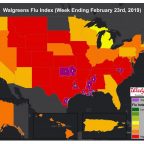Wedding Gift-Giving Tendencies Vary by Region
Wedding gift-giving habits tend to vary by region, according to a new report from Bankrate.com. The Northeast is the biggest outlier of them all, with significantly higher standards for the value of a typical gift.
Guests in the Northeast are more than twice as likely as the rest of the country to spend big on a wedding gift for a close friend or family member. Thirty percent indicate their typical gift is at least $200 in value, compared to just 13% of everyone else. Similarly, for gifts given to colleagues, acquaintances and distant relatives, 46% in the Northeast spend at least $100, compared to 24% of the rest of the country.
https://youtu.be/2XrR9QusW3g
As for the preferred type of gift, Northeastern and Midwestern gift-givers bring cash or a check most often, while those in the South and West are more likely to buy a physical gift off the registry. Less popular answers include store-specific gift cards, pre-paid gift cards and honeymoon contributions.
Gift types also vary by age. Forty-six percent of the Silent Generation and 33% of Baby Boomers indicate they prefer to give cash or a check, compared to only 20% of Millennials. Gen Xers and Millennials are more likely to give a physical gift off the registry (34% and 24% respectively) compared to just 13% of the Silent Generation and 19% of Baby Boomers.
For some, the added expense of attending a wedding is too much of a financial strain altogether. Twenty-one percent indicate that they have declined a wedding invitation because they felt they couldn’t afford to go, including 27% of women and 16% of men.
“Wedding traditions differ greatly from region to region, and so do gift-giving tendencies,” said Sarah Berger, The Cashlorette at Bankrate.com. “Invitations usually go out months before the big day, so start budgeting early. However, if you simply can’t afford to go, be financially responsible and skip the event. No soiree is worth sacrificing all of your savings!”
The survey was conducted by Princeton Survey Research Associates International. PSRAI obtained telephone interviews with a nationally representative sample of 1,000 adults living in the continental United States. Interviews were conducted by landline (500) and cell phone (500, including 308 without a landline phone) in English and Spanish by Princeton Data Source from April 6-9, 2017. Statistical results are weighted to correct known demographic discrepancies. The margin of sampling error for the complete set of weighted data is plus or minus 3.8 percentage points.






